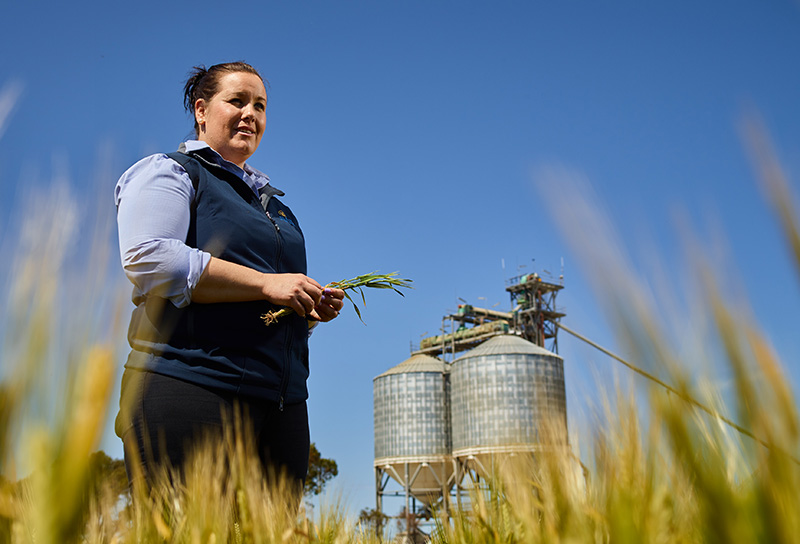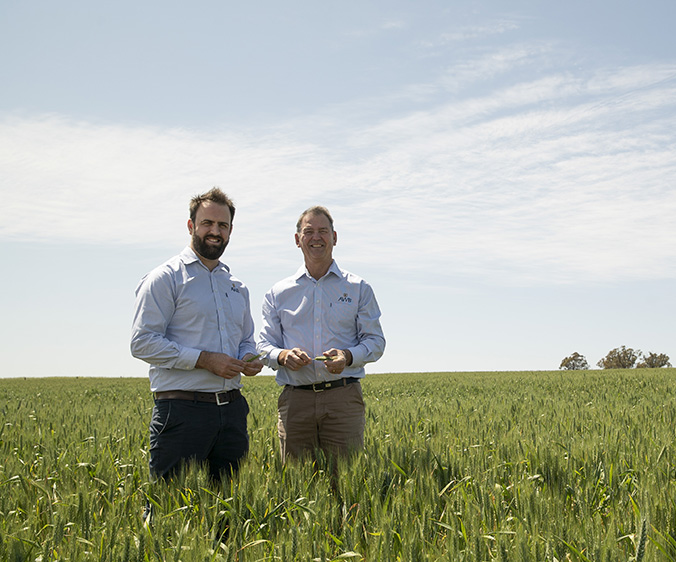A record year for canola?
By Angus Groves
As we approach the Anzac Day holiday many farmers across the state are taking advantage of fantastic sowing conditions for early sown crops such as grazing wheat and barley, and of course the traditional early sown crop, canola.
Sowing this year has presented a few challenges, ranging from mice pressure in the Northern parts of NSW, to variable moisture through the Central to Southern parts of the state since the March flooding. But largely, the available subsoil moisture and price signals for these early crops are encouraging farmers right across the state to feel optimistic as they get sowing.
Canola is a particular highlight this season, with pricing at historically high levels farmers are rotating their paddocks away from traditional early crops such as faba beans or oats, and into canola. The subsoil moisture the many farmers now have stored, thanks to the wet and cool summer we have experienced, also makes canola an attractive choice. Once established, the canola plant has a large taproot that can access moisture stored deep in the soil profile and this opens up this soil profile for future years. The challenge now is to establish the canola plant with variable topsoil moisture after rain in April has largely been missed in Central and Southern NSW.
Canola is generally sown just under the surface of the soil and farmers like to get a light shower of rain just after sowing to help the small seed emerge. As it has been some weeks since the last general rainfall the topsoil moisture is starting to recede, this makes establishing the plant difficult due to these drier conditions.
Amazingly, our compatriots across the country in Western Australia are having no such troubles with topsoil moisture after Cyclone Seroja passed through the state early last week. The cyclone dropped 15-50mm across the state and was perfect timing for many farmers as they had either sown the seeds into dry paddocks or returned after the Cyclone had passed to sow the seeds into the newly available moisture.
And it’s not just the sowing conditions that are driving many farmers across the country to increase their canola plantings. The canola pricing for November/December delivery are historically high as countries in the Northern Hemisphere, particularly Canada, battle a severe drought.
This has sent the benchmark European November futures price soaring over 16% in the space of just three months. The price has climbed from $616 AUD in January to over $735 AUD today, a rise of almost $120/mt over the period.
Many farmers have taken advantage of this early pricing spike and decided to start their canola marketing as they sow the seeds into the ground. Others have chosen to wait on the sidelines until they are confident the crop will emerge from the ground.
Whatever your view on the ongoing drought across the Northern Hemisphere this is a good chance to take advantage of historically high canola prices, during a year when Australia might plant its largest area of canola on record.
SA Market Wrap - March

The past two months have seen the ports a hive of activity and domestic consumers back in the market, with grain moving rapidly by road and rail into these customers and ports.
Read MoreRain leads to rethink of winter cropping plans

March has been eventful for NSW with floods and large rainfalls stretching through much of the cropping belt. Whilst it may negatively impact a few farms with summer programs, most farmers are rejoicing and rethinking their winter cropping plans.
Read MoreWA Market Wrap - March

The past two months has seen some great rainfall totals over a large part of the West Australian wheat belt with a few lucky areas now over 150mm of summer rainfall.
Read MoreRain, rain, come again

A week can be a long time in grain markets and the week just passed was no exception. With over eight inches of soaking rain received in parts of Southern and Central New South Wales cropping belts since Thursday last week, agriculturalists will look back fondly.
Read MoreTightening ocean freight exerts its influence on local markets

The tightness in the global freight market is certainly being felt in supply chains across Australia. Naturally, as the cost of vessels rise, freight rates to move the product also rise and as a result the cost of moving grain and oilseeds from Australia to consumers globally also increases.
Read More